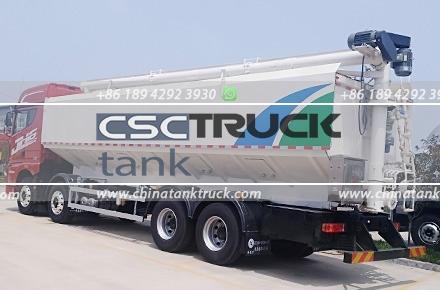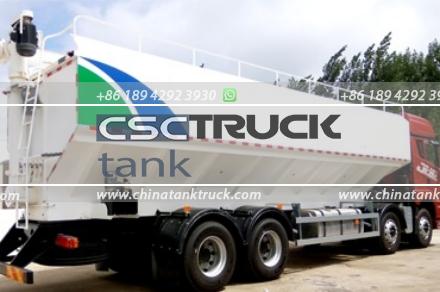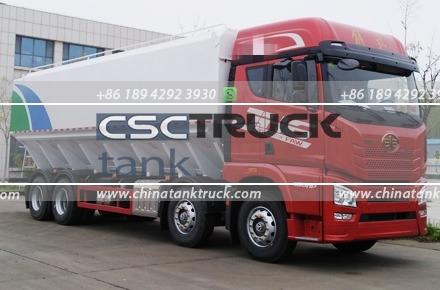What is a Mechanical vs Pneumatic Tank?
When discussing industrial equipment, vehicles, and fluid storage systems, you may come across the terms “mechanical tank” and “pneumatic tank.” While both types of tanks are used in various applications, their functioning, design principles, and uses differ significantly. Understanding the differences between mechanical and pneumatic tanks can help in selecting the appropriate system for specific applications in industries ranging from manufacturing and agriculture to construction and transportation. This article will dive into the fundamental differences, advantages, disadvantages, and typical applications of each type of tank.
1. Mechanical Tanks
Definition:
A mechanical tank refers to a storage system where the pressure control, fluid movement, and other functions are primarily governed by mechanical means such as levers, springs, valves, and motors. These tanks do not rely on air or gas pressure but instead use a set of mechanical components to manage the containment and release of the stored fluid or gas.
Design & Operation:
Mechanical tanks are designed with a focus on durability and stability. They usually have a rigid structure made from materials like steel, aluminum, or composite materials. Inside, a series of mechanical components such as pumps, valves, and pistons help control the flow and storage of liquids or gases. These components work together to ensure that the liquid or gas can be moved in and out of the tank with precision.
One example of a mechanical system is a spring-loaded valve. The valve may open or close based on the pressure exerted by a spring, allowing or blocking the flow of liquid. Another common mechanical feature is a pump that physically moves fluids, using mechanical force instead of relying on air pressure or gravity.
Types of Mechanical Tanks:
1. Gravity-fed Mechanical Tanks: These rely on the force of gravity to discharge liquids, typically used in situations where large volumes of liquid need to be moved without requiring significant pressure.
2. Pump-assisted Tanks: These tanks use mechanical pumps to draw or push fluids, making them suitable for higher-pressure or longer-distance applications.
3. Hydraulic-assisted Tanks: Hydraulic mechanical tanks use hydraulic systems to create movement, often in situations where precise fluid control is needed, such as in manufacturing equipment.
Advantages of Mechanical Tanks:
– Precision Control: Mechanical tanks offer accurate control over the release and movement of fluid. This makes them ideal for applications where precision is key, such as in the medical or automotive industries.
– Durability: Since mechanical tanks are built with solid materials and fewer components subject to wear and tear, they tend to last longer under harsh operating conditions.
– No Dependency on Air or Gas: Unlike pneumatic tanks, mechanical tanks do not rely on air pressure. This eliminates the need for air compressors, which can add complexity and cost to a system.
Disadvantages of Mechanical Tanks:
– Complexity: Mechanical tanks can become complex in design when they involve many moving parts like pumps, levers, and valves. This can make maintenance more labor-intensive.
– Energy Consumption: Mechanical systems often require energy to power pumps or motors, potentially increasing operating costs.
– Size & Weight: Due to the heavy-duty materials and complex mechanical systems, these tanks are often larger and heavier than pneumatic alternatives.

2. Pneumatic Tanks
Definition:
A pneumatic tank uses compressed air or gas to control the storage, movement, or release of fluids. In contrast to mechanical tanks, pneumatic systems rely on air pressure to facilitate their operations. These tanks are widely used in industries where compressed air is readily available or where the storage and handling of materials like gases are required.
Design & Operation:
Pneumatic tanks are typically simpler in construction compared to mechanical tanks. Their essential component is a pressurized chamber where air or gas is introduced to displace the liquid or gas stored in the tank. When the pressure is released, the stored material is forced out of the tank. This pressurization mechanism can be managed through air compressors or gas cylinders, depending on the specific application.
A typical pneumatic tank design might consist of a sealed chamber and a pressure valve. When air is pumped into the chamber, it compresses the fluid or gas inside, creating a pressurized environment. Once the system’s valve is opened, the pressure forces the liquid or gas out of the tank, allowing it to be transported or utilized.
Types of Pneumatic Tanks:
1. Bladder Pneumatic Tanks: These tanks use an internal bladder or diaphragm to separate the liquid and the air. As the air is pressurized, it compresses the bladder, pushing the liquid out.
2. Pressurized Gas Tanks: These tanks are commonly used for storing and transporting gases such as nitrogen, oxygen, and propane. The compressed air inside the tank facilitates the controlled release of the gas.
3. Air-over-Water Tanks: These tanks contain a pressurized air chamber above the liquid. As the air compresses, it forces the water or liquid out of the tank.
Advantages of Pneumatic Tanks:
– Simplicity: Pneumatic tanks often have fewer moving parts compared to mechanical tanks, leading to simpler designs and easier maintenance.
– Flexibility: Pneumatic tanks are versatile and can be used in a variety of applications, including the handling of both gases and liquids. They are also adaptable to systems requiring rapid pressurization or depressurization.
– Lightweight: Since pneumatic systems rely on compressed air rather than mechanical components, the tanks can be lighter in construction, often made of materials like aluminum or reinforced plastic.
Disadvantages of Pneumatic Tanks:
– Dependence on Compressors: Pneumatic systems require an air compressor or pressurized gas source, which can add cost and complexity to the system.
– Less Precision: Compared to mechanical systems, pneumatic tanks may offer less precise control over fluid movement, especially in highly sensitive applications.
– Energy Requirements: While pneumatic systems are generally efficient, maintaining consistent air pressure requires energy input, particularly in large-scale industrial applications.
3. Mechanical vs. Pneumatic Tanks: A Comparison
Operating Principle:
– Mechanical Tanks rely on physical components like pumps and levers to move fluid, while **Pneumatic Tanks** use air pressure to drive fluid movement.
Precision:
– Mechanical tanks typically provide more precise control over fluid movement, making them better suited for applications that require exact fluid management.
– Pneumatic tanks, on the other hand, maybe less precise but excel in rapid fluid movement and ease of operation.
Cost and Complexity:
– Mechanical tanks can be more expensive and complex due to the use of additional components like pumps, motors, and valves. This can result in higher maintenance costs.
– Pneumatic tanks are simpler in design and often easier to maintain, though they require a compressor or air source, which can add operational cost.
Application Suitability:
– Mechanical tanks are commonly used in industries that require controlled fluid management, such as manufacturing, automotive, and chemical processing.
– Pneumatic tanks are widely used in applications where air pressure is readily available or where the rapid movement of gases and liquids is essential, such as in construction, agriculture, and medical gas storage.

Conclusion
Both mechanical and pneumatic tanks serve essential roles in various industries. Mechanical tanks offer precision and durability, making them suitable for controlled environments, while pneumatic tanks provide flexibility and simplicity, ideal for situations requiring rapid pressurization. The choice between the 2 depends on the specific needs of the application, including factors such as cost, control, and fluid type.

